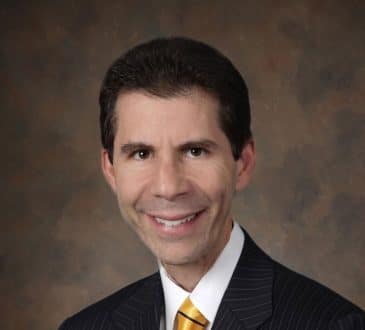Structure Can Help Address the Challenges of Distributed Work

As hybrid and remote work arrangements continue to reshape the workplace, organizations are wrestling with a critical question: how do you retain flexibility while still fostering culture, consistency, and career growth? For Drew Fesler, Chief People Officer at RB Global, whom I interviewed on this topic, the answer lies in structure—an intentional approach to managing a highly distributed workforce that balances autonomy with clarity.
RB Global, the world’s largest online and offline marketplace for industrial and automotive salvage equipment, operates across 26 countries with over 8,000 employees. The company’s workforce is notably split: around 75% work onsite at “yards” or “branches,” while the remaining 25% operate in more traditional corporate roles with hybrid or remote options. This two-world reality has prompted deep reflection on how to maintain equity and cohesion across such diverse work environments.
A Mixed Model With Uneven Expectations
The pandemic cemented remote work as a viable model for many organizations, and RB Global is no exception—at least on the corporate side. “We haven’t had a full return-to-office environment for our administrative sites,” Fesler shared. “But our yard and branch employees never left. They were considered essential and remained onsite throughout.”
This divergence has created an unexpected benefit: a clearer career pathway for onsite workers. “If someone working in the yard wants more flexibility, they now see a path into roles that offer that. That wasn’t as visible before,” Fesler explained. It’s an organic form of upskilling, allowing frontline employees to envision upward mobility not just in responsibility but also in lifestyle.
Still, while flexibility is valued, it also presents significant challenges—especially when policies are unevenly applied. The decentralized nature of RB Global’s current model, where local team leaders have broad discretion over remote work arrangements, has led to friction. “We’re seeing inconsistencies between teams that sit right next to each other,” Fesler noted. “That creates disengagement, even if it’s not disruptive yet.”
The Culture Question in a Virtual World
One of the most complex aspects of hybrid work is maintaining culture without a shared physical space. Fesler acknowledges that virtual tools—like quarterly town halls, monthly leader meetings, and open office hours for change management—help maintain communication. However, they don’t fully replace the human connection that naturally emerges in physical environments.
“There is something that’s lost in a fully virtual setting,” Fesler said. “We’re not going to over-index on in-person just to chase culture, but we recognize that meaningful, organic connections are harder to build remotely.”
One of RB Global’s internal experiments is incorporating moments of personal recognition and storytelling into virtual meetings. Leaders regularly start meetings with “shout-outs” and highlights of personal or professional wins. “We spend the first 10–15 minutes of every meeting doing this,” Fesler shared. “It creates a moment of connection—even if we’re not all in the same room.”
Still, Fesler remains cautious about leaning too far into social-style virtual activities. “For us, culturally, we tend to get down to business quickly. Creating non-work-related virtual events could be an uphill climb,” he admitted. Yet he sees promise in simple connection-building mechanisms, like randomized virtual coffee chats, as a low-barrier way to expand interdepartmental and cross-geographic relationships.
Generational and Organizational Tensions
RB Global’s workforce spans multiple generations, from recent graduates to long-tenured veterans. This spectrum brings differing expectations. Older employees often prefer traditional office environments, while younger workers are more comfortable in virtual spaces. “It’s not a generational collision,” Fesler clarified, “but it does create tension.”
These generational divides mirror broader organizational differences. RB Global has grown through frequent acquisitions, and with each new company comes a unique culture. Hybrid work only compounds the challenge of building a unified identity.
To Fesler, this is where structure becomes essential—not to mandate uniformity, but to reduce friction. “What our people leaders are asking for now is not less flexibility, but more structure around that flexibility,” he said. “Guidelines, rules of the road—something that provides clarity without taking autonomy away.”
Building Flexibility With Boundaries
The future of flexible work at RB Global, according to Fesler, will depend not on rolling back remote policies but on defining a framework that makes them sustainable and fair. “We’re looking at creating more structure and consistency in 2025,” he said. “Not a one-size-fits-all solution, but something that creates equity across similar roles.”
This pivot from ad hoc arrangements to guided autonomy reflects a broader trend across industries. A growing number of companies are beginning to realize that flexibility without expectations can backfire—leading to misalignment, resentment, and cultural drift.
Fesler is keenly aware of this risk. “We have to be sensitive to the fact that multiple arrangements shouldn’t become disruptive to the whole,” he explained. The company’s goal is to evolve from a reactive to a proactive approach—one that honors both the needs of the business and the preferences of a modern, multigenerational workforce.
Looking Ahead: Clarity as a Compass
RB Global’s journey toward structured flexibility is far from over, but the direction is clear. Flexibility is no longer a temporary accommodation—it’s a strategic advantage. But to realize its full potential, it needs form, not just freedom.
As companies like RB Global refine their distributed work strategies, they reveal a powerful insight: structure doesn’t stifle flexibility—it enables it. By creating clear frameworks, transparent guidelines, and intentional moments of connection, organizations can navigate the complexities of the modern workforce while building a culture that transcends location.
In an era where the workplace is increasingly defined by choice, it’s structure—not mandates—that may ultimately unify the workforce.
Have you read?
The World’s Best Medical Schools.
The World’s Best Universities.
The World’s Best International High Schools.
The World’s Best Business Schools.
The World’s Best Fashion Schools.
The World’s Best Hospitality And Hotel Management Schools.
Bring the best of the CEOWORLD magazine's global journalism to audiences in the United States and around the world. - Add CEOWORLD magazine to your Google News feed.
Follow CEOWORLD magazine headlines on: Google News, LinkedIn, Twitter, and Facebook.
Copyright 2025 The CEOWORLD magazine. All rights reserved. This material (and any extract from it) must not be copied, redistributed or placed on any website, without CEOWORLD magazine' prior written consent. For media queries, please contact: info@ceoworld.biz








